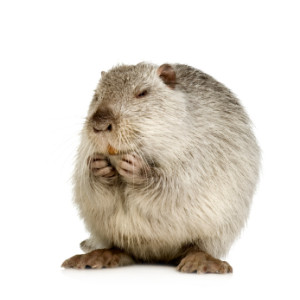 Texas is under invasion. Outside intruders are visiting our backyards, waterways, and agricultural fields. As people and goods travel across state and national borders faster than ever, invasive species from faraway places like Africa and Asia threaten our native plants and animals.
Texas is under invasion. Outside intruders are visiting our backyards, waterways, and agricultural fields. As people and goods travel across state and national borders faster than ever, invasive species from faraway places like Africa and Asia threaten our native plants and animals.
According to TexasInvasives.org, a multi-agency partnership that aims to educate Texans about the threat of invasive species, individual invasive species can cause crop and lawn damages of $100 million or more per year. Although only 15% of non-native organisms can be classified as “invasive,” these unwanted pests threaten the native species that make Texas unique and prosperous. Here are a few of the state’s newest enemies.
African Cluster Bug
This invasive insect is just as gross as its name implies. It’s often found in damaging swarms that can descend on cropland and gardens. With a fearsome reproduction rate and an appetite for local cash crops like flax and thyme, the African cluster bug is no friend of Texan farmers. It resembles a minor stink bug in shape and features distinctive black, white, and yellow markings on its back. Fortunately, it can be controlled relatively easily: it likes to lay its eggs in the invasive horehound weed, so spraying these unwanted plants with an environmentally friendly pest control treatment is a significant first step.
Citrus Root Boll Weevil
In recent years, this particularly nasty species of boll weevil has been wreaking havoc in the Houston area and points south. Unfortunately, its impact is getting worse. Although it only lives for a few months, the citrus root boll weevil breeds prolifically and attacks important Texas crops like peanuts, corn, sweet potato, and various citrus species. Entrenched infestations in your yard or cropland may require multiple foliage sprays. Still, it’s easy to disrupt the life cycle of a non-established population by draining the area around vulnerable crops or introducing larva-killing nematodes into the surrounding soils.
Nutria
These beaver-like rodents might look cute, but they’re aggressive breeders that destroy native plants and displace animals that belong here. Brought to the Midwest in the early 20th century to support the area’s fur industry, nutria has traveled down to Texas, feeling its presence with a vengeance. They’ve now set up burrows along many of the Houston area’s waterways and look likely to expand their range further inland. If your property is nutria-free, keep it that way by building fences or setting poison-laced carrot baits on its periphery. Entrenched infestations are typically mitigated with hunting or trapping.
Have you noticed these or any other invasive species on your Houston property? Give us a call at ABC Houston to explore your pest control options.